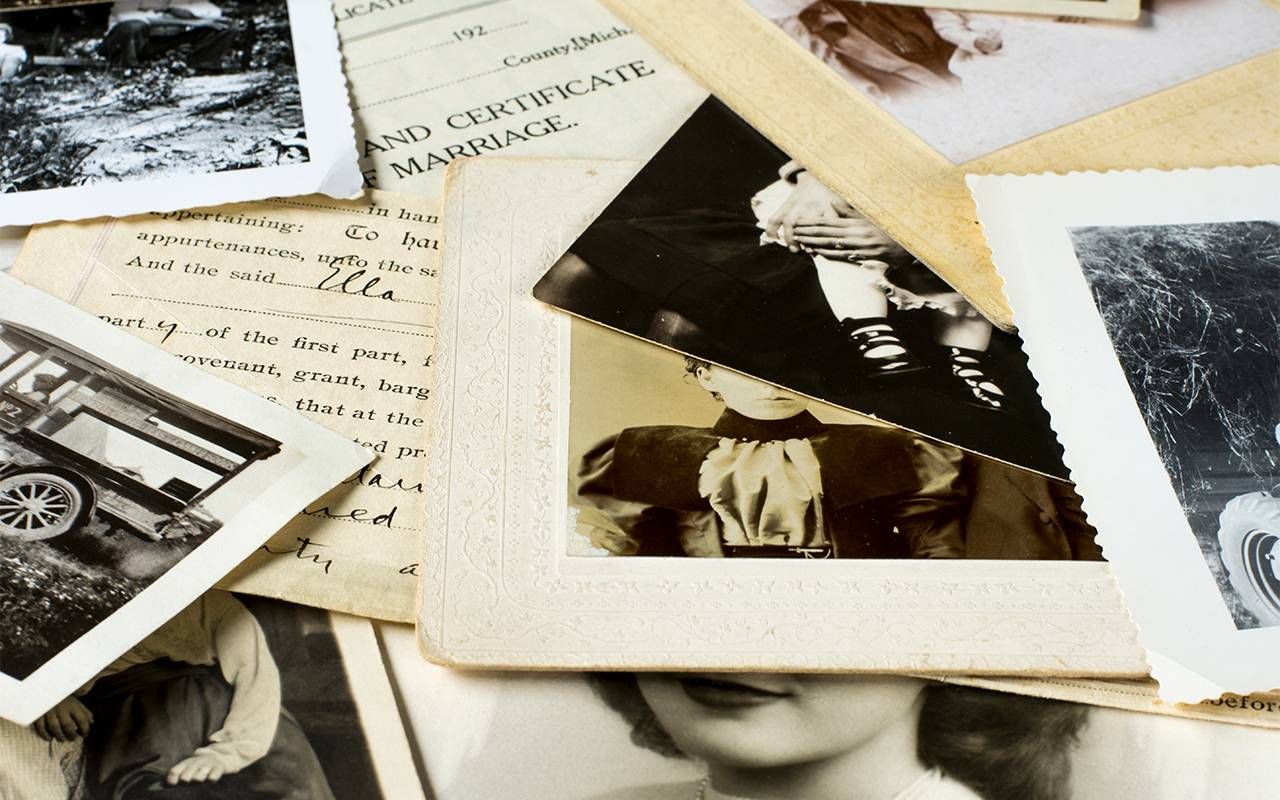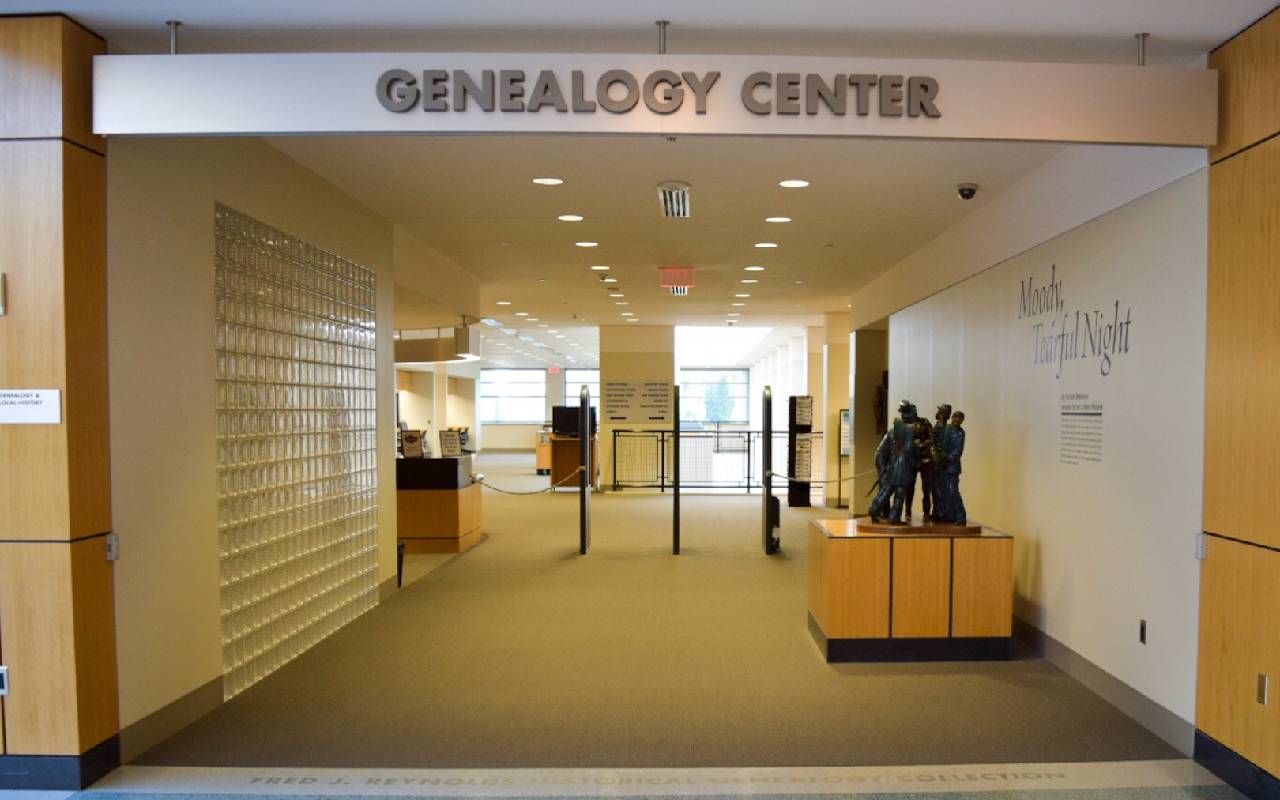Hit a Roadblock in Researching Your Roots?
Here's how to shake up your family tree

Searching for your roots to answer the ultimate questions about identity — who am I and where do I come from? — is a popular hobby. But it's easy to get stuck and discouraged in your search, even with the hints provided by Ancestry.com and other genealogy companies, or to discover that you've been led down the wrong path, which can be maddening considering how much time genealogy searches can take.
"Our librarians provide their services for free to all comers over the phone, via email and in person."
That's where it pays to call on a genealogy center, says Curt Witcher, director of special collections at one of the country's top genealogy research centers at Fort Wayne, Indiana's Allen County Public Library.
"Our librarians provide their services for free to all comers over the phone, via email and in person: People who are just beginning to trace their roots, those who've been searching for a while and even professional genealogists," he reports.
Start With Your DNA
If you're new to genealogy — or even if you've already started a search and compiled a family tree — consider taking an Ancestry.com DNA test (cost $59 and up), which can reveal your family's origins going back hundreds of years, says Allison DePrey Singleton, genealogy services manager at the Allen County Public Library. It's estimated that 30 million people, mostly Americans, have already taken DNA tests to find their ethnicity.
Overall, 99.5% of DNA is identical for all human beings, but the other 0.5% contains variants that are associated with specific ancestral groups, ethnicities and regions of the world.
All you need to do is order the test online and return a sample of your saliva. Ancestry is preferred to other companies, such as MyHeritage.com, which requires a cheek swab, and 23andme.com, which uses a salvia sample, that provide similar services but don't have databases as large as Ancestry.com's, she says.
Linking Your DNA to Specific Regions
Each individual inherits half of their DNA from their mother and half from their father. Overall, 99.5% of DNA is identical for all human beings, but the other 0.5% contains variants that are associated with specific ancestral groups, ethnicities and regions of the world.
Ancestry compares your personal DNA sample to these reference populations, which allows the company to draw conclusions about your family's origins and create a report for you. For instance, my DNA links me to reference populations in Scandinavia (29%), Finland (12%), Ireland (17%) and western and eastern Europe. I even have a tiny bit of Neanderthal DNA (as most of us do!).
Beyond that, Ancestry.com has compiled 27 billion historical records and 100 million family trees, which can further help to pinpoint the regions, countries and sometimes even counties, towns or villages where your ancestors lived.
Getting Help from Genealogy Libraries
Once you have received your DNA information from Ancestry.com, the real work begins in searching for family records and creating a family tree. And while it's easy to be gung-ho at the start of a search for your ancestors — and the genealogy companies do a great job of providing videos and written information on how to conduct a search — it's equally easy to get stuck on your journey or find holes you can't fill. That's where genealogy libraries and most importantly, their highly trained staff librarians, can get you going again.
Where to Find Genealogy Centers
In addition to the Allen County Public Library, there are other top genealogy libraries in the United States, and most if not all offer their services free of charge, says Witcher. One of the biggest genealogical libraries in the world is the FamilySearch Library in Salt Lake City. It is open to anyone, but owned by the Church of Jesus Christ of the Latter-day Saints, whose members are guided by a moral imperative to connect families across generations.

Most of the libraries have searchable websites and may offer virtual programs and classes on how to conduct searches. Some genealogy centers offer email and telephone services. Many have digitized records, while others have collections and databases that can only be searched when you're actually present in the library.
The information can include Census data, immigration records, passenger manifests, birth and death indexes, marriage and divorce certificates, military service records, newspapers, maps, court records, church memberships and school yearbooks.
Many genealogy searchers plan vacations and trips around visiting certain centers to comb through their stacks of records. For instance, if you know that your great-grandparents lived in Indiana, it makes sense to visit the Allen County Library, which gets about 35,000 visitors a year who come to search through The Genealogy Center's physical collection of 1.2 million volumes covering all of North America — a collection that grows by 1,000 items a month — as well as access various databases and their library subscriptions to sites like Ancestry.com and MyHeritage.com.
"It's so much fun to go beyond when and where people were born, married and died and discover the actual stories behind the history."
Singleton advises having a specific focus at each step of your search and when you visit a library rather than using a scattershot approach. For example, you might first focus on your paternal grandmother or grandfather's origins, or you might look into the maternal side of your family. The librarians can point you to area-specific historical records to thumb through, as well as scan or copy.
"We will teach you how to do the research and where to look," says Singleton, "but we won't do the actual work for you." That's partly because the librarians, although they are passionate about their jobs, don't have the time to research each person's genealogy and partly because they want patrons to experience the joy of the search themselves.
"It's so much fun to go beyond when and where people were born, married and died and discover the actual stories behind the history," she says. "These people often had interesting lives!"

